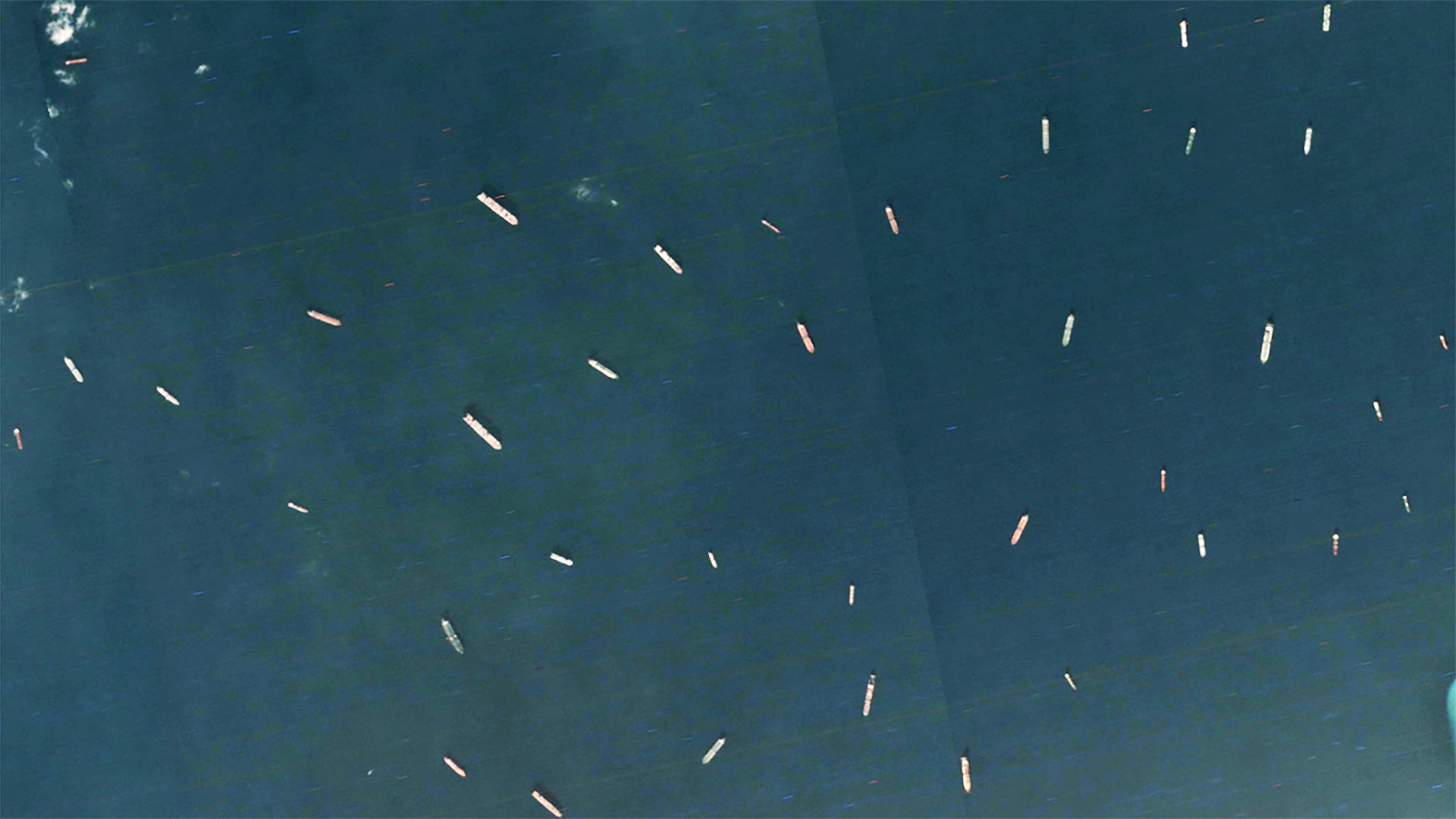

If you think your week isn’t going that great, some perspective is in order: At least you’re not the owner of the MV Ever Given, a 1,300-foot container ship that brought the global shipping industry to its knees on Tuesday when it got stuck almost sideways in Egypt’s Suez Canal, cutting off a vital passage in the flow of goods, oil and military assets between Europe and Asia. Over two days later, it’s still stuck despite frantic efforts to free it—and satellite images
The Drive obtained from Planet Labs show the vast nautical traffic jams building as over 180 similarly-massive ships have stacked up on either side of the blockage, waiting for the route to clear.
Running through northeastern Egypt, the Suez Canal connects the Mediterranean Sea and the Red Sea (which leads to the Arabian Sea and eventually the Indian Ocean) and serves as the most direct route for ships traveling between Europe, the Middle East and Asia. It typically sees an average of over 50 transits a day, but with nowhere to go following the accidental grounding of the MV Ever Given, those ships have been stacking up in multiple locations: the Mediterranean Sea at the north end, the narrow Gulf of Suez to the south, and for an unlucky handful, a wide spot in the middle of the canal known as Great Bitter Lake.

According to Lloyd’s List, the mix of stranded vessels includes at least 41 bulk carriers, 33 container ships, dozens of tankers with various forms of oil and petroleum on board, and at least one Russian warship. The outlet also estimates that the situation has halted almost $10 billion per day in marine traffic, and the backup continues to grow as Bloomberg notes another 120 ships globally are still headed towards the canal, the only other option being a long trip around Africa. The sequence of photos below shows the backup at the south end in stages, with the full composite image of the Gulf of Suez published further down in the story.



On Thursday, Airbus Space shared the highest-resolution satellite image of the stuck ship so far, and it illustrates exactly why the grounding is such a disaster. Fully laden and displacing 220,000 tons, the MV Ever Given was struck by unexpectedly high winds on Tuesday that pushed it into the banks of the canal, which is just 673 feet wide, lodging it at an angle that almost fully blocks the waterway. It’s essentially acting as a giant closed valve as pressure builds on both sides.

Though there are many, many stakeholders hoping for a quick resolution, the situation does not look promising. Efforts to refloat the ship—one of the largest cargo vessels in the world—and widen the canal with land-based excavators have so far failed. The CEO of an elite Dutch salvage company that’s been dispatched to the scene said on Thursday that it could be days or even weeks before the MV Ever Given can be removed, likening it to “an enormous beached whale.” It’s not known yet whether the ship will need its cargo unloaded first, which would further complicate the already difficult task.
The Japanese company that owns the ship sounds similarly pessimistic in a statement published by the BBC:
“In co-operation with local authorities and Bernhard Schulte Shipmanagement, a vessel management company, we are trying to refloat [the Ever Given], but we are facing extreme difficulty,” Shoei Kisen Kaisha said. “We sincerely apologize for causing a great deal of worry to ships in the Suez Canal and those planning to go through the canal.”

In a similar incident back in 2016 where another supermassive container ship ran aground in a tight spot—the Elbe River in Germany—it took six days to free it. But the Suez Canal is just a hair more important to clear out, with over 10 percent of global trade at stake.
Contact the authors: Kyle@thedrive.com and Tyler@thedrive.com